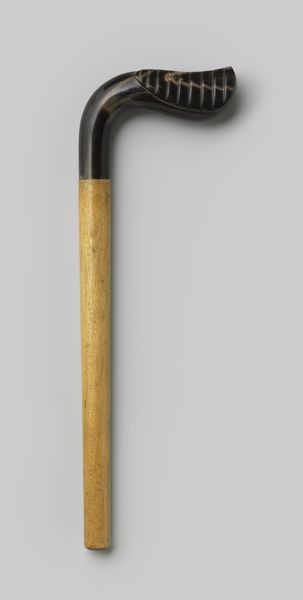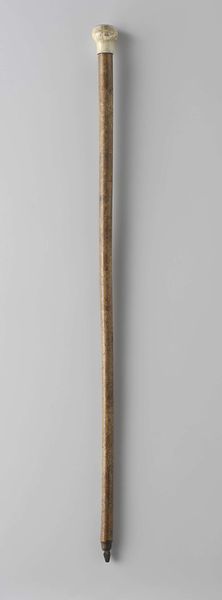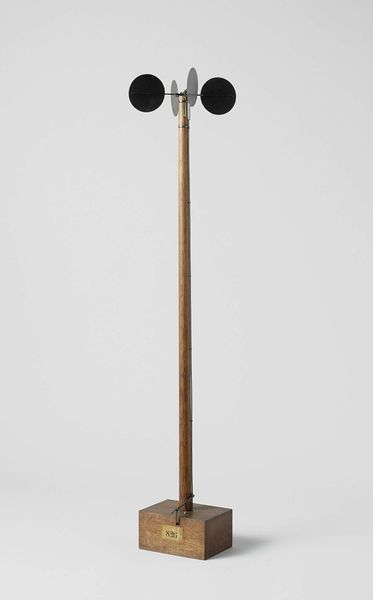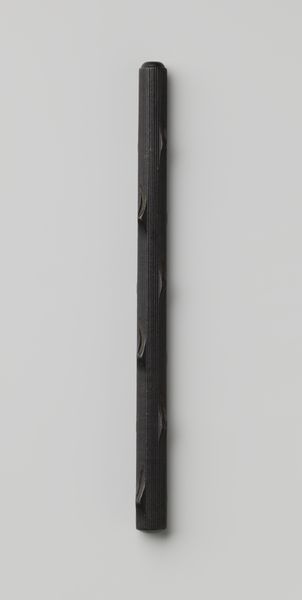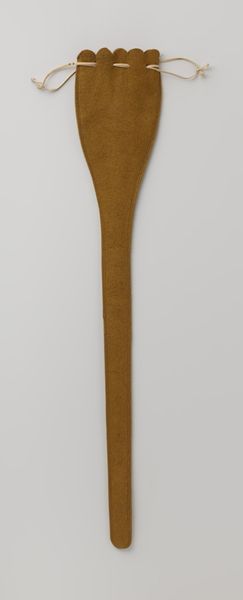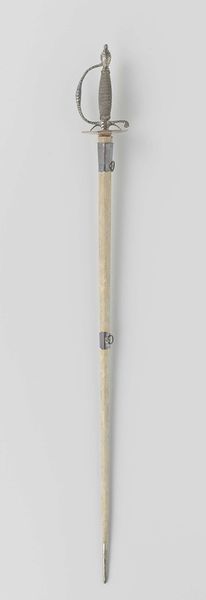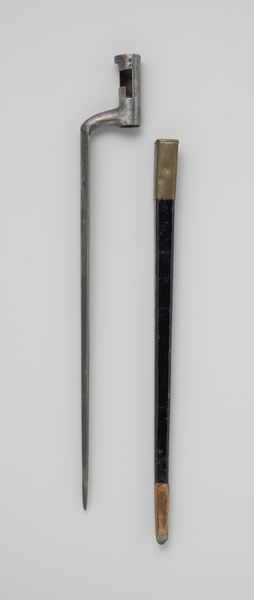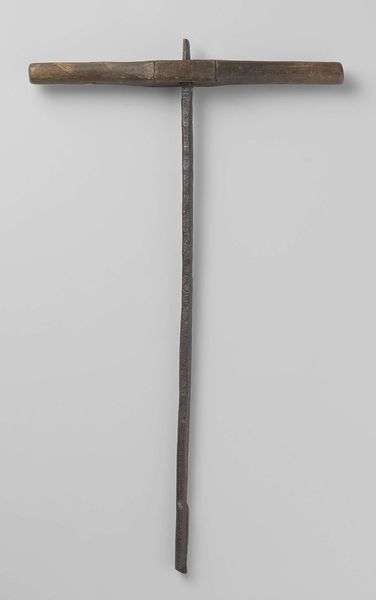
Onderstok van parasol of parapluie van rotting met alpaca bol op ring en voorzien van stompe, metalen punt c. 1920 - 1940
0:00
0:00
gustavschnitzler
Rijksmuseum
metal, wood
#
metal
#
wood
Dimensions: circumference 12 cm, length 1.7 cm, length 84 cm, length 3 cm
Copyright: Rijks Museum: Open Domain
Curator: This object, housed here at the Rijksmuseum, is recorded as the bottom section of a parasol or umbrella. Constructed of rattan with alpaca and metal detailing, it dates back to somewhere between 1920 and 1940. Editor: It’s such an understated piece. Its very simplicity gives it a certain dignity, doesn’t it? You immediately think of the hand that would have held it, the occasion on which it would be brought out, like attending a garden party. Curator: Absolutely. While its function seems quite simple, the context of this umbrella element is tied to class and the culture of sun protection, wasn't it? It speaks to a society where shielding oneself from the sun was fashionable, and therefore indicative of privilege. Editor: Right, think of the racial politics entwined within that. European beauty standards historically equated whiteness with beauty, demanding protection from the sun's supposed damage while simultaneously exoticizing tan skin on bodies deemed ‘other’. It is not a universal truth to want to evade the sun. Curator: Yes, and the materials also speak to broader trends. The rattan, along with the alpaca bol and the metal accents all signify a certain degree of economic power during that time. Consider that, because this is merely the bottom, it can almost symbolize a form of dispossession— we have only the remains and an obscure purpose. Editor: Obscurity isn't always negative. We, as a museum, play such a crucial role in reactivating the stories contained in this stick: whose umbrella was it and who did they shield from the sun? And more urgently, why? The very choice of that shielding could carry powerful meanings still worth excavating today. Curator: True. Examining everyday objects opens paths for richer connections with the past. These types of relics prompt reflections not only about craftsmanship, materials, or history, but also about complex hierarchies, value systems, and social anxieties that underpinned society and the status it held up to maintain it. Editor: Well, I think this has challenged me to look past the simplicity, as you say, and imagine all the many social intricacies of that single sun-shade in action!
Comments
No comments
Be the first to comment and join the conversation on the ultimate creative platform.

